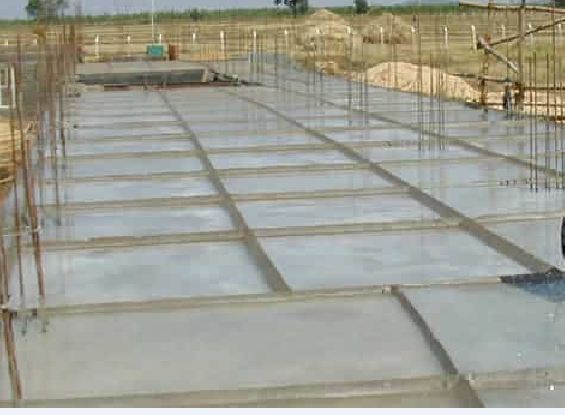CONCRETE CURING BY POURING WATER
WHY
DO WE CURE CONCRETE BY POURING WATER?
Curing
of concrete is the process that is done for a certain time in order that the
concrete can attain the required strength, all we have to know is how water
pouring functions on curing?, what happens if we do not pour water
on concrete as curing method?, are there any other methods of curing out of
pouring water?
WATER
POURING AS CURING METHOD
Pouring water as curing
method is the most common and traditional method which can be done by either of
the following methods
- Ponding
This is the most common and inexpensive method of curing flat
surfaces such as floor slabs, flat roofs, pavements and other horizontal
surfaces.
- Sprinkling,
fogging & mist curing:
Using a fine spray or fog or mist of water can be an efficient
method of supplying water to the concrete surface especially during hot
weather, which helps to reduce the temperature of concrete, eventually
conserving moisture inside the body of concrete.
- Wet
coverings:
Water absorbent fabrics such as hessian, burlaps, cotton mats,
rugs etc. may be used to maintain water on the concrete surface by completely
covering the surface immediately after the concrete has set. They must be
continuously kept moist to prevent the fabric from absorbing water from the
body of concrete, due to capillary action.
Curing
of concrete (strengthening of concrete) occurs as there is hydration process
take place between cement and water, this hydration process is the exothermic
chemical reaction that form crystal that hold together aggregate and cement
paste in concrete formation.
The
designed amount of water for concrete mixing is enough for concrete to complete
hydration process and attain full strength then why do we cure again by pouring
water into concrete?
I
know most of us need to know the answer of above question, the reason why we
still pour water onto concrete while the designed water is enough for concrete
to have complete hydration (attain full strength) are as described below.
1. To maintain the concrete
temperature
During hydration process there is
formation of heat as the core temperature which should be maintained to avoid
slow or fast curing of concrete, as we all know change in temperate can alter
the speed of chemical reaction.
Change in speed can cause the hardened
concrete to have different properties compared to desired one.
2. To maintain water content for
hydration
Due to the fact that during
hydration process heat is generated and cause water to evaporate (loss of water
to the atmosphere), water on the concrete surface can account on water that is
lost due to evaporation and make the hydration process to takes place
continuously until the desired strength is attained without stopping.
When hydration process stops it
cannot be started again and the desired strength will not be attained as the
hydration process will not be completed.
3. To avoid cracking of hardened
concrete
Water
losses due to evaporation not only happens due to core temperature but also due
to a atmospheric temperature, winds etc.
In
fresh concrete surface we had seen cracks due to shrinkage of concrete, this
occur due to the atmospheric temperature at surface of concrete which
evaporates the water from surface thus leads to crack on the surface (More
cracking occurs in summer compare to winter).
Water
on concrete surface reduce direct heat on the concrete surface and keep it cool
throughout curing period (hydration process time)
All on all from above point we
can now say that “A bad Concrete can be
turned into a good Concrete by doing proper curing and A good Concrete Becomes
Bad if we don't cure it properly”.
By
above reasons can also answer that question what will happen if we will not
pour water on concrete let check on other question that are there other curing
method out of pouring water method?
Yes,
there are other methods out of water curing method, on the coming post we will
explain different curing methods used in construction industry besides the one
discussed.





Comments
Post a Comment